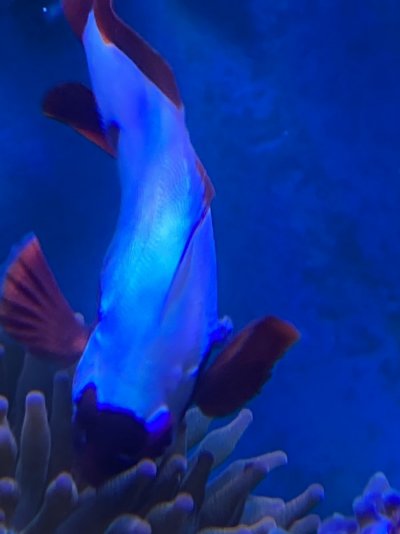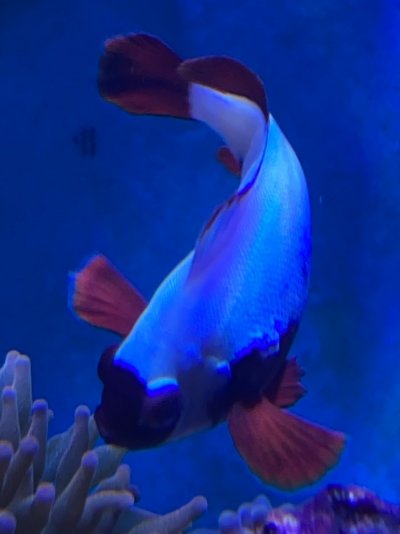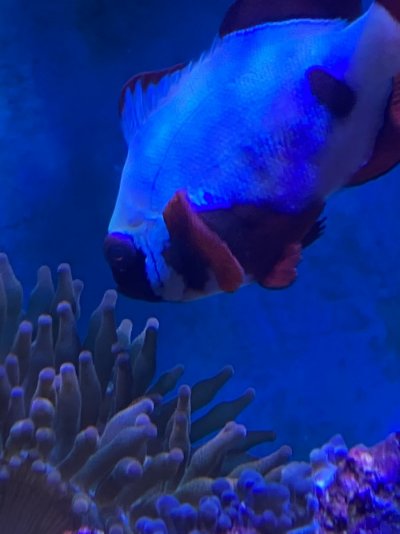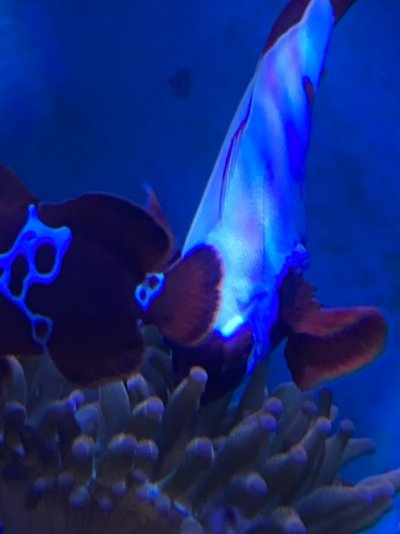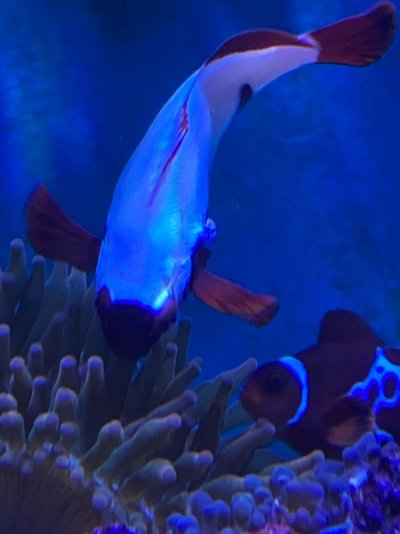- Joined
- Mar 8, 2020
- Messages
- 81
- Reaction score
- 86
So I’ve had this fish for about a month and she has been a head down swimmer ever since I got her so we all know clown fish are weird and I didn’t think anything of it. Today I turned up the lights to do my weekly close check of everybody and see that she has some kind of lesion/tumor and also appears to have a Popeye on one side. I’m including video if anybody can give me clarification of what they think this looks like. I’m concerned about tuberculosis obviously. The male lightning maroon that is in the tank with her fine. He has no spots or lesions or symptoms. She is not fully mature, less than a year old. Gold flake maroon. Of course this is my favorite fish in my favorite anemone tank. My heart is broken unless you guys can recommend some kind of process or treatment and maybe it’s not what I fear it is.
